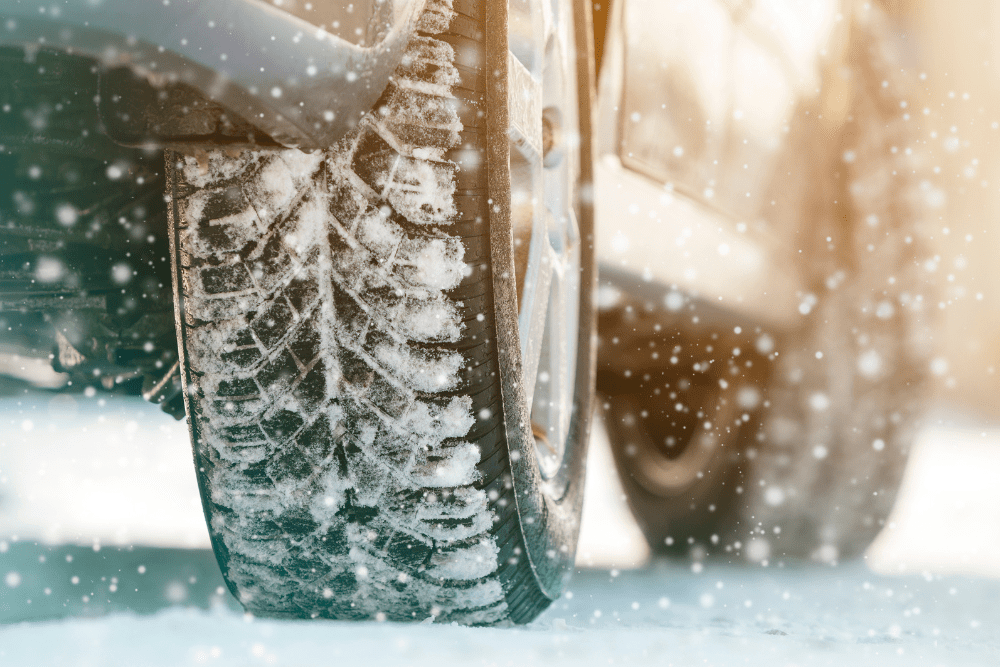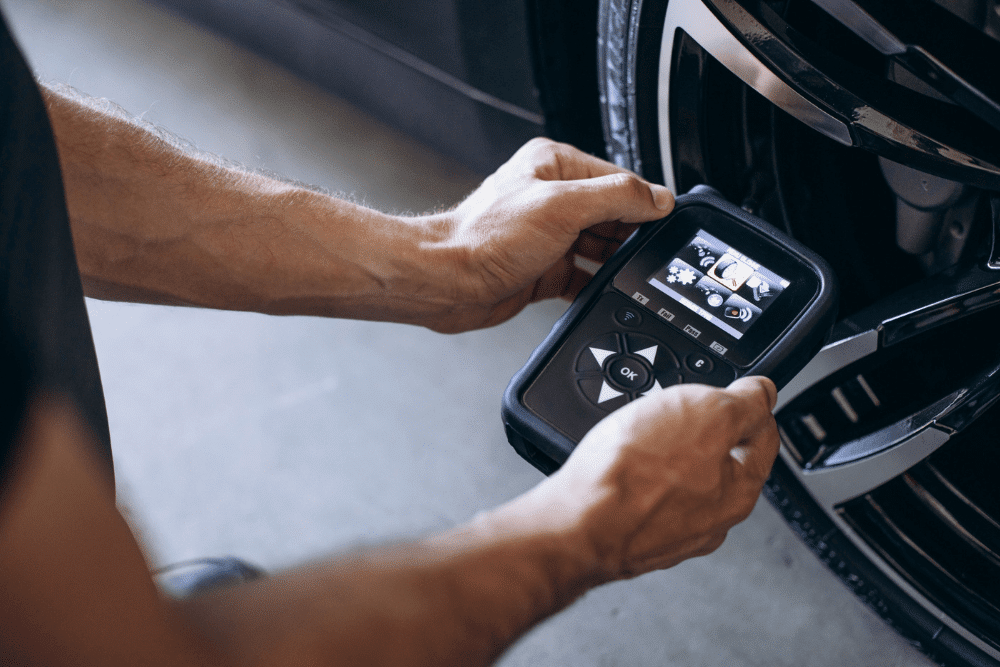Winter Tire Safety Guide: Stay in Control on Minnesota Roads with Arvu Auto
If you’ve ever wondered whether your tires are truly ready for a Minnesota winter, the answer starts here. The key to winter driving safety is more than having tires with tread — it’s knowing when to replace, rotate, or realign them. Equipping your vehicle with quality winter tires can make all the difference, offering better traction, control, and braking performance on icy or snowy roads. Arvu Auto breaks down exactly how to check tire tread for winter, how to spot unsafe wear, and what type of tires perform best in cold-weather conditions.
Keep reading to discover expert insights on tire maintenance, Minnesota-specific driving tips, and how the right service — along with the right set of winter tires — can keep your vehicle prepared for every mile of the cold season.

Minnesota Winters Demand More from Your Tires—Here’s Why
Winter tires are more than just a seasonal upgrade. They are specifically designed to stay soft and flexible in cold weather, allowing them to grip snow and ice better than standard all-season tires. The tread patterns are also deeper and more aggressive, which helps clear slush and water away from the contact area.
In Minnesota, where roads can be covered with snow for months at a time, that extra grip is essential. Even if you have an all-wheel-drive vehicle, it still relies on the tires to maintain traction and stability. Without proper tires, even the most advanced vehicles can struggle to stop or handle corners on slippery roads.
Key takeaway: Winter tires help you maintain control, stop safely, and drive more confidently in harsh conditions.
How to Check Tire Tread for Winter
When it comes to winter driving tire safety, tread depth is everything. The deeper the tread, the more effectively your tires can push snow and slush away from the road surface.
Recommended Winter Tire Tread Depth
While tires are considered legally worn out at 2/32 inch, that is not nearly enough for winter driving. For safe winter traction, experts recommend:
- 6/32 inch or more – Ideal for deep snow and slush.
- 4/32–5/32 inch – Still usable but starting to lose traction.
- Below 4/32 inch – Unsafe for winter conditions.
Simple Ways to Measure
1. The Quarter Test
Insert a quarter into the tread with Washington’s head facing down. If you can see the top of his head, it’s time to replace your tires.
2. Tread Depth Gauge
A simple and inexpensive tool that provides an accurate reading.
3. Built-in Tread Wear Indicators
Most tires have small raised bars between the grooves. When your tread wears down to the same height as these bars, your tires are at their limit.
If you’re unsure, have a technician check your tires professionally. At Arvu Auto, we measure tread depth precisely, evaluate wear patterns, and recommend the best options for your vehicle.
Unsure about your tire condition? Book a tire inspection today.
When Tires Are No Longer Safe for Winter
Many drivers assume that if their tires still have some tread left, they are fine for winter. Unfortunately, that’s not always the case. Cold temperatures and road salt can harden rubber and accelerate wear, even on newer tires.
Common signs your tires may no longer be safe for winter:
- Tread depth below 5/32 inch
- Visible cracks or dry rot in the rubber
- Uneven wear or bald spots
- Tires vibrating or pulling while driving
- Tires older than six years
If you notice any of these issues, it’s time to inspect or replace your tires before the first snowfall.
At Arvu Auto, we offer a wide range of winter, all-season, and performance tires from trusted brands. We also handle professional installation, seasonal tire swaps, and alignment checks so you can drive with confidence through the coldest months.
Local Insight: Understanding Minnesota’s Winter Driving Conditions
Driving in Minnesota comes with its own set of challenges. With long stretches of subfreezing temperatures, road conditions can shift quickly, from packed snow to black ice to deep slush.
That constant variation makes tire selection and maintenance essential. Even the best all-season tires can struggle to keep up with Minnesota’s unpredictable winter mix.
Each Arvu Auto location sees those conditions from a different perspective:
Our team uses this local insight to help you choose tires that match your driving habits, routes, and the real-world conditions you face every winter.
Simple Tire Maintenance Tips to Stay Safe All Winter Long
Owning winter tires is just the first step. Maintaining them ensures consistent performance all season long.
1. Check Tire Pressure Regularly
Air pressure drops in cold weather. Underinflated tires reduce traction and can increase braking distance. Check pressure every two weeks and maintain manufacturer-recommended PSI.
2. Rotate and Balance Tires
Rotating tires every 5,000 to 8,000 miles promotes even wear and longer tire life.
3. Keep Alignment in Check
If your car pulls to one side or the steering wheel vibrates, alignment may be off. Proper alignment improves handling and prevents premature wear.
4. Drive Smoothly
Avoid hard braking, fast acceleration, or sharp turns. Gentle driving helps preserve traction and control.
For complete tire care, alignments, and rotation services, visit our Tires & Alignment page to keep your vehicle performing safely all winter.
How Arvu Auto Helps Drivers Stay Safe
At Arvu Auto, we know what Minnesota winters demand from your vehicle. Our ASE-certified technicians and NAPA AutoCare partnership ensure every tire service meets top standards for safety and reliability.
We believe in clarity and honesty, helping you choose what’s best for your goals, driving habits, and budget, not pushing unnecessary work.
Our Core Values
- Articulate: Clear explanations so you can make confident choices.
- Reliable: Quality service designed for long-term safety.
- Versatile: From diesel trucks to family SUVs, we handle it all.
- United: Working together with you to keep your vehicle at its best.
Complete Tire Service That Goes the Distance
Arvu Auto offers tire sales, installation, balancing, seasonal swaps, and alignments for all major vehicle types. When we install your tires, we also check your alignment to help protect your investment and extend tire life.
Our team is here to guide you through every step, whether you’re switching to winter tires, planning a seasonal changeover, or looking for help choosing the right set for your vehicle and driving habits. We’ll make the process simple, clear, and stress-free, just like the rest of your service experience with us.
Preparing for the Months Ahead
Here’s a quick checklist to help you stay ahead of winter:
- Inspect tire tread depth (5/32 inch or more recommended)
- Check pressure every couple of weeks
- Rotate and balance regularly
- Watch for cracks or uneven wear
- Schedule an inspection or tire swap before the first snow
Taking these steps now helps prevent costly surprises once the snow starts to fall.
Frequently Asked Questions
How much tread being left for winter is a good idea?
You should have at least 5/32 inch of tread depth for safe winter driving. Below that, tires struggle to grip snow and slush effectively. For optimal traction, aim for 6/32 inch or more before temperatures drop. Regular tread checks help ensure consistent winter tire safety.
How does handling decrease with tread depth?
As tread depth decreases, your tires lose their ability to channel snow, slush, and water away from the contact area. This leads to longer braking distances and less stability on turns. Maintaining proper tread helps preserve traction and steering control during winter driving.
How do I know if my tires are okay for winter or not?
Your tires are safe for winter if they have at least 5/32 inch of tread, show no cracks or bulges, and are made from rubber that remains flexible in cold weather. If you notice vibration, uneven wear, or aging beyond six years, it’s time to replace or inspect them.
What happens if I use all-season tires in winter?
All-season tires harden in freezing temperatures, reducing their grip on icy roads. They can work in light snow but often struggle in heavy or prolonged winter conditions. For Minnesota’s long, cold season, winter tires offer much better traction and control.
How often should I check my tire pressure in winter?
You should check tire pressure at least every two weeks in winter. Cold air causes tire pressure to drop, which can reduce traction and fuel efficiency. Keeping tires properly inflated ensures consistent performance and helps prevent uneven wear throughout the season.
Winter Tire Services in Long Lake, Watertown & Cokato, MN
Make this winter your safest one yet with expert tire installation, rotation, and alignment services from Arvu Auto. Our technicians will check your tread depth, evaluate your current tires, and install a set that gives you traction, stability, and confidence on every winter drive.
- Long Lake: 560 Willow Dr N, Long Lake, MN 55356 | Call: 952-444-1093 | Text: (952) 234-7675
- Watertown: 601 White St SE, Watertown, MN 55388 | Call: (952) 955-2761 Text: (952) 209-8805
- Cokato: 315 Cokato St E Cokato, MN 55321 | Call: (320) 286-5925 Text: (320) 247-6296
Request an Appointment Online


